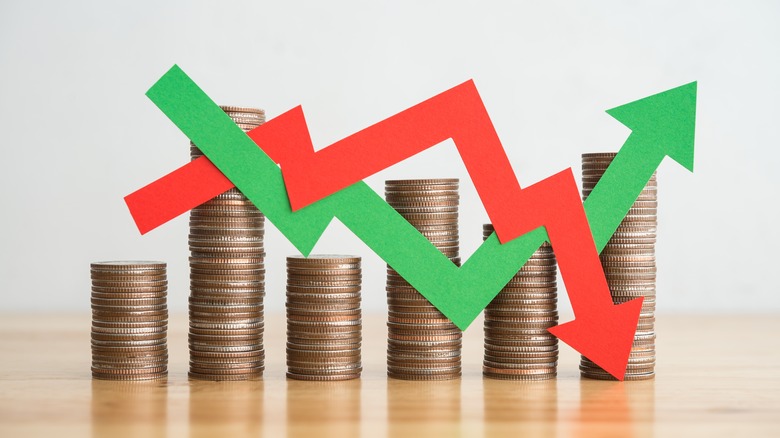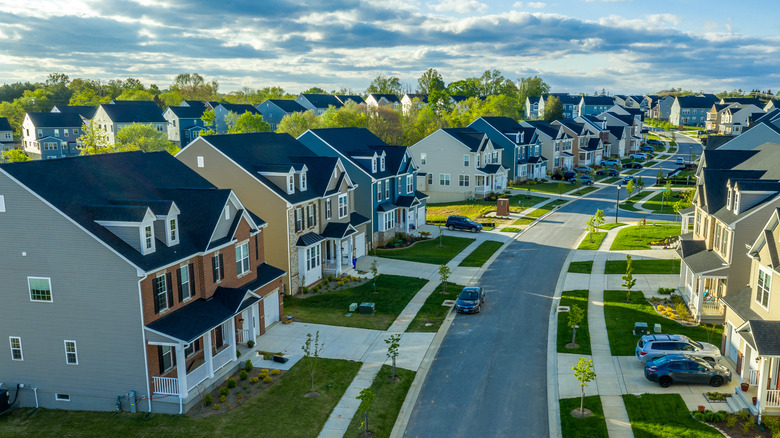The Housing Market Is Currently In 'Correction' - Here's What That Means
When the Federal Reserve moved to counter inflation by raising interest rates, the reverberations hit the national real estate market hard in two ways: On average, a 30-year fixed mortgage rate jumped from 3% to more than 6%, meaning it will be more expensive to buy a home in 2023 than it was this year. The other consequence of the Fed raising rates is that the hyper-expensive real estate markets on the West Coast and hot regional markets, such as Las Vegas, Portland, and Nashville, are seeing lower housing prices, according to Fortune.
During the pandemic, buyers and investors drove up housing prices by 40%, a phenomenon that's now being corrected by a softer housing market and also by investors right now deciding not to put money into previously hot markets (via Fortune). As investors bail, housing costs decrease. This course correction, or balancing of housing prices, is taking place all across the country, though there are differences between various markets.
Peering into 2023
Fortune also quotes Jerome Powell, chair of the Federal Reserve, who indicated the pandemic created a housing bubble, with high demand for housing, low-interest rates, and low inventory. Indeed, this is a perfect storm that genuinely needs to be corrected or balanced out after such an intense period with an overheated market. For the rest of 2022 and the beginning of 2023, even though prices are coming down, buyers are waiting, according to Realtor.
That's because the spike in interest rates from 3% to 6% translates into hundreds of dollars more for mortgage payments. In fact, per Realtor, median monthly payments are 80% higher now than they were in 2021. This can create havoc with budgeting, especially for first-time buyers, as people simply can't afford to purchase a home. Experts are split regarding when the correction will stop, with some predicting national home prices will drop by 10% and others saying the drop will continue to 20%. If this is any indication of how things will go, 2023 will be off to a slow start until the drop levels off.

